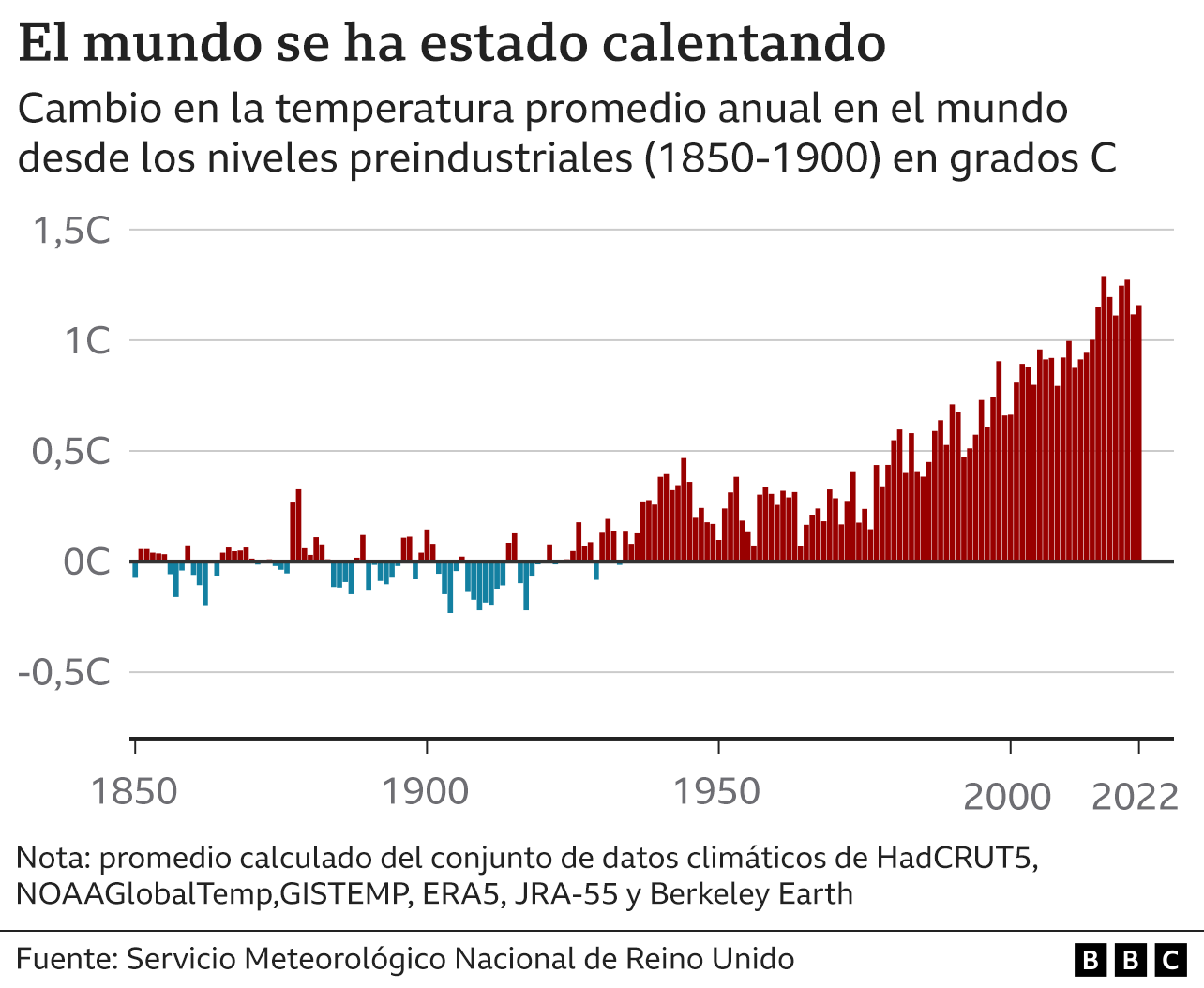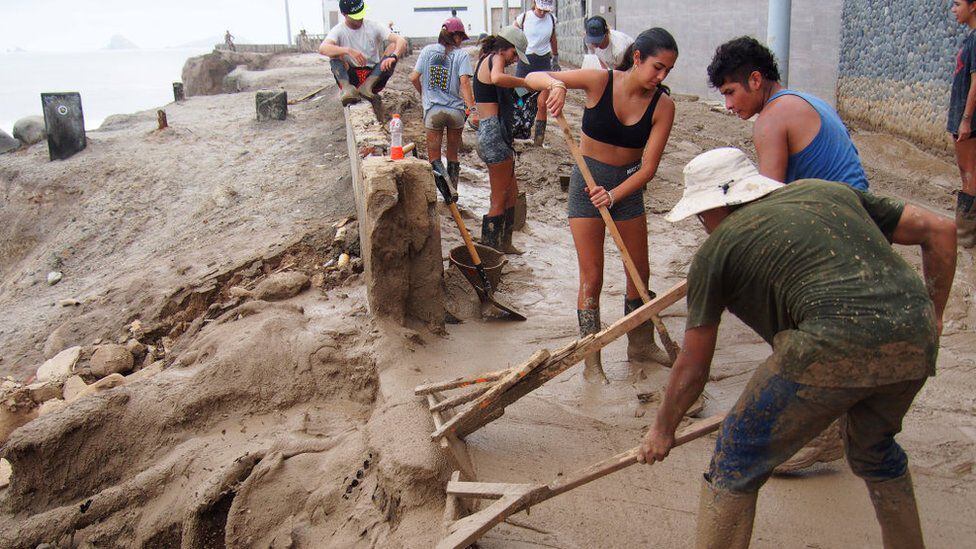Global warming will likely exceed a key temperature limit for the first time in the next 5 years, scientists predict.
Researchers indicate that currently there is a 66% chance that we will exceed the threshold of 1.5ºC of warming between now and 2027.
LOOK: A powerful El Niño phenomenon is forming: The “inexplicable” warming of the oceans that alarms scientists
The increased likelihood of that happening is due to emissions caused by human activity and the El Niño weather event, which is expected this summer.
If the world exceeds that limit, the scientists emphasize that this record, although worrisome, it would probably be temporary.
Reaching that threshold would mean the world would be 1.5C warmer than it was in the second half of the 19th century, before fossil fuel emissions from industrialization began to rise.
The figure of 1.5ºC has become the symbol of the global climate change negotiations. Nations agreed to “carry forward efforts” to keep the global temperature increase below 1.5ºC, under the 2015 Paris Agreement.
Exceeding 1.5ºC for a decade or two in a row would result in longer heat waves and more intense storms and fires.
However, exceeding that threshold in one of the next few years would not mean that the limit agreed in Paris has been violated. Scientists say there is still time to curb global warming by sharply cutting emissions.
Since 2020 the World Meteorological Organization (WMO) has been estimating the probabilities that the world will exceed the 1.5ºC limit in any given year.
When they started, they predicted that there was less than a 20% chance of exceeding 1.5ºC in the next five years.
But last year that forecast had risen to 50% and has now jumped to 66%, making scientists believe it is “more likely to happen than not.”
What does it mean to exceed 1.5ºC?
The figure is not a direct measure of global temperature, but an indicator of how much or how little the Earth has warmed or cooled compared to the long-term global average.
Scientists use average temperature data from the period 1850-1900 as a measure of how hot the planet was before the world’s increased use of coal, oil, and gas.
For decades they thought that if the world warmed by about 2ºC, that would be the threshold for the most dangerous impacts. However, in 2018 they modified that calculation, and placed it at 1.5ºC.

In recent decades, global warming has raised the thermometer in such a way that in 2016, the hottest year on record, temperatures rose 1.28ºC above the pre-industrial figure.
Researchers now say with 98% certainty that that record will be broken before 2027..
And that between 2023 and 2027 it is very likely that the 1.5ºC limit will be exceeded for the first time.
“We are really close to reaching the temporary excess of 1.5ºC for average annual temperature, and it is the first time in human history that we have come this close,” said Professor Adam Scaife of the UK’s National Weather Service. .
The researchers point out that temperatures would have to be maintained at an increase of 1.5ºC or above for 20 years to be able to say that the threshold established in the Paris Agreement has been exceeded.
Nevertheless, going over the limit for even one year is a worrying sign that warming is accelerating, not slowing down.
What impact will El Niño have?
There are two key elements: the first are high levels of carbon dioxide emissions produced by human activity, they keep going up.
The second critical factor is the probable occurrence in the coming months of El Niñoa climatic phenomenon that has global implications.
For the past three years the world has been experiencing a La Niña event, which has slowed climate warming to some degree.

But the additional heat that El Niño will bring to the surface of the Pacific will likely raise global temperatures to a new record next year.
However, there is still uncertainty regarding exactly when the event will happen and on what scale.
Source: Elcomercio
I am Jack Morton and I work in 24 News Recorder. I mostly cover world news and I have also authored 24 news recorder. I find this work highly interesting and it allows me to keep up with current events happening around the world.

:quality(75)/cloudfront-us-east-1.images.arcpublishing.com/elcomercio/U7OPSUK3IFAAPCVG7YPAS5WCK4.jpg)

:quality(75)/cloudfront-us-east-1.images.arcpublishing.com/elcomercio/W6DZ3M33QFBLZAMWRJU3NHTWAY.jpg)
:quality(75)/cloudfront-us-east-1.images.arcpublishing.com/elcomercio/HU2HYM5DF5C6HEQP5N3BX54VVI.jpg)
:quality(75)/cloudfront-us-east-1.images.arcpublishing.com/elcomercio/6T5VR63ZIVHVHIZXGIZCSUVBCM.jpg)
:quality(75)/cloudfront-us-east-1.images.arcpublishing.com/elcomercio/4Z4GK4UIDRHGVMXXRD7UDZWAKA.jpg)
